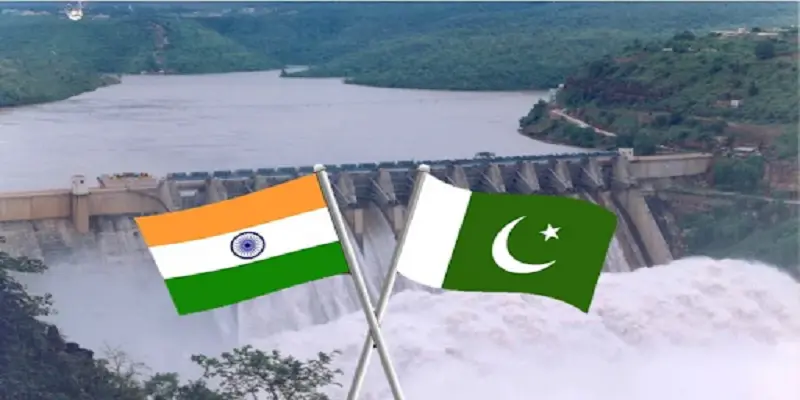The Indus Water Treaty's Impact on India-Pakistan Relations
Water is the greatest blessing of Allah over the earth. It is believed that Allah has given the Nile to Egypt as well as the Indus in the country of Pakistan. The principal stream of the Indus, together with other rivers, like Jhelum and Chenab, which flow into Pakistan, originate out of the states Jammu and Kashmir. But Ravi, Beas and Sutlej are all tributaries of India. In reality, Pakistan's agricultural sector entirely depends upon the flows of these vital water reservoirs. Still, India has various rivers and water sources that can help its agriculture that was established. The idea of a reunion was expressed by Indian leaders right from the beginning of independence day, and it was a stipulation that the work of canal heads entering Pakistan would be handed over to India. The country would construct dams over the rivers that run into Pakistan through India. In essence, the plan was in place long before the partition to create a similar situation to a draught in Pakistan by cutting her off from the vital streams of water that rely on the country's agro-based economy.
The issue of how water was distributed broke out into conflict shortly after the East and West Punjab divisions. This partitioning of Punjab affected the river and canals, making Pakistan a lower riparian and India a higher riparian. The Indian government repeatedly offered promises that they would not intervene and would not violate the right of Pakistan as a neighbour and lower riparian. However, in defiance, they never abided by the promises and often threatened to block the flow of rivers. India also interfered with the river's flow on April 1 1948, by cutting through Ravi and Sutlej links only six months after the declaration of independence.
Pakistan was under a severe threat of water shortage and the destruction of agriculture. Pakistani delegations were assigned to India to try to solve the issue. However, the situation worsened each day instead of improving due to the cutting of the Indus river, which is believed to be a source of income in Pakistan. India refused to accept the idea of the Pakistani delegation because of her anti-Christian behaviour. Pakistan also offered a plan to address the issue via the world bank. However, it was not a good idea for Indian leaders because Pakistan tried to resolve the issue at the table. However, the opposition was intent on forcing the nation's newly born to accept the unification. The head of the Tennessee Valley Authority wrote in an article, "No armies armed with bombs and shells could have wiped out an area as thoroughly such as Pakistan might be devastated due to the easy method of India's permanent cutting off the supply of water, which keeps the land and the people in Pakistan green."
In September 1950, The Indian administration agreed that it would solve the dispute through adjudication. However, it demanded there be a tribunal in which two members were from each party, and there should be a neutral chairperson. Pakistan approved the proposal. The chairman of the World Bank" for construction and development," Eugene Black, took the responsibility of forming an advisory committee from both sides to resolve this issue. The process took several years to find the solution to this grave problem between two arch-enemies, and each day was like a year. On September 19 the 19th in 1960, an agreement was signed by two nations in Karachi which is known as the Indus Water Treaty.
The president of Pakistan, Ayub khan from Pakistan and P.M Jawaher Lal Naehro from the Indian side agreed to meet and sign the agreement. In the agreement, it was agreed that the World Bank divided the full reservoir into two sections. Beas, Ravi and Sutlej rivers were given to India, and Chenab Jhelum and Indus were made available to Pakistan. However, Pakistan needed dams, canals, and barrages to compensate for the loss of Pakistan's capabilities and capacity to construct. Therefore, it was that it was decided that for the storage of water. Pakistan could be assisted in the construction of barrages, dams and, at minimum, seven link canals, to which India would contribute 200 million of the total cost of the scheme. At the same time, the remainder will be paid to the World Bank, the US, Canada, and other friendly states of Pakistan.
India attempted from the first day of independence to destroy the state born in Pakistan because Hindu leadership wanted to suppress the Muslim community of India. The Hindus have never missed an occasion to attack and discredit their Muslim community. Thus, they attempted on several occasions to pressure Pakistan to reopen its borders and numerous times within the valleys in Jammu and Kashmir to create an obstruction to the route of Indus that would have put a doubt mark on the agricultural bone of Pakistan. This is why Pakistan was advised to opt for the World Bank to find a more appropriate solution. The treaty was signed under the Indus Water Treaty, under which the flow of water was equally divided among two states on the base of the lower and upper riparian.

